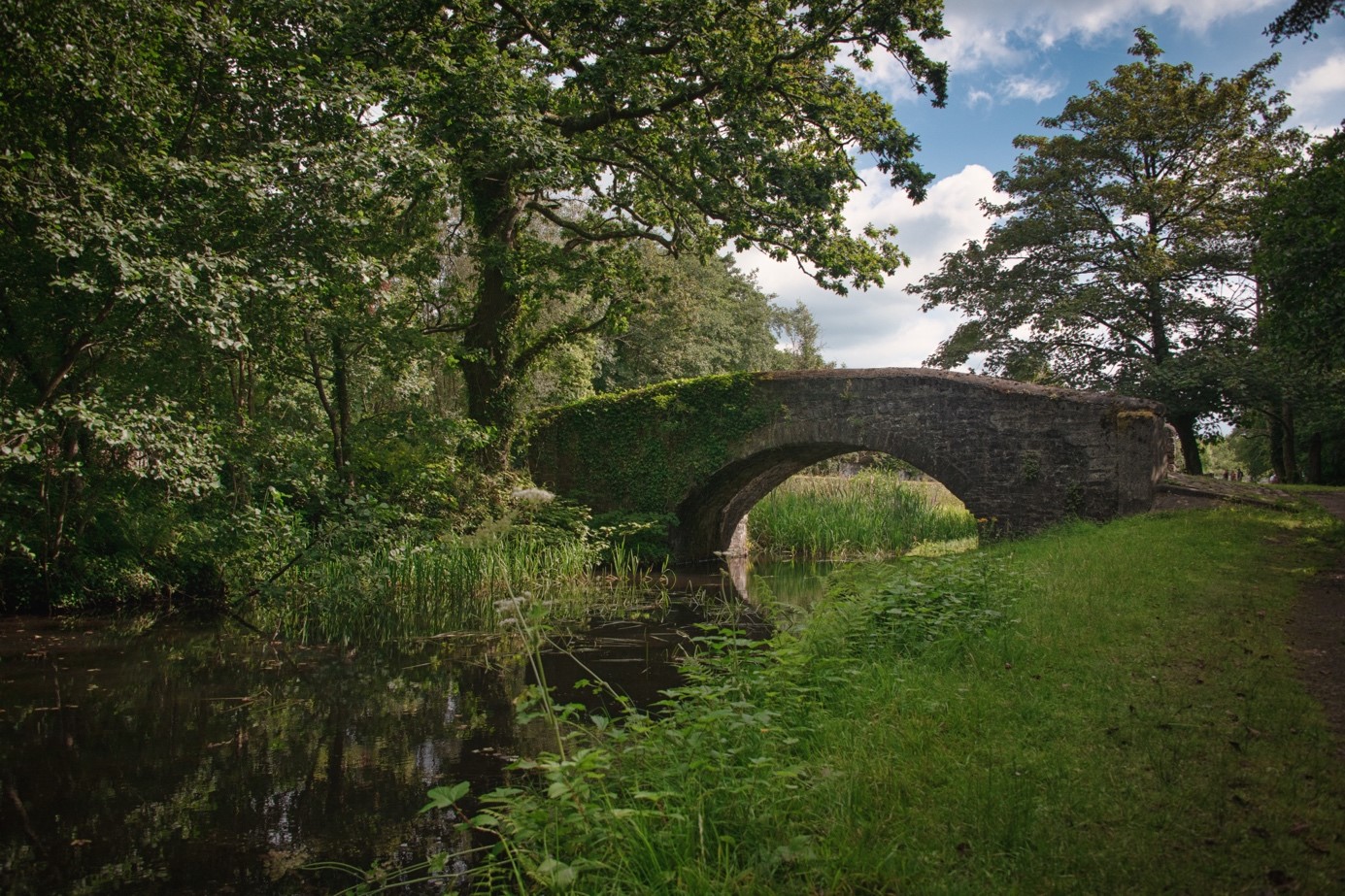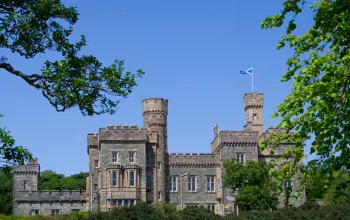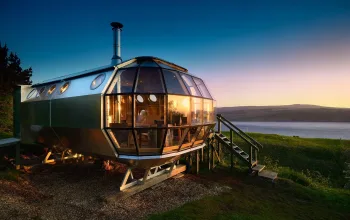Sponsored content
For walkers, few places offer the drama and diversity of Neath Port Talbot. Its mountains and valleys, rivers and coastline provide a natural tapestry for the many miles of hiking trails that thread their way through the landscape.
The welcoming communities of Neath Port Talbot, steeped in the legacy of steel and coal, and the passion of poetry and song, take great pride in showcasing their industrial heritage while inviting visitors to revel in the wonderful nature on their doorstep.
Easily reached by road and rail from the rest of the UK, Neath Port Talbot is a great destination for walkers eager to explore deeper into this wonderful part of the UK.
Where is Neath Port Talbot - the Dramatic Heart of Wales?
Sitting proudly between the Brecon Beacons and Swansea Bay, the area of Neath Port Talbot is a highly accessible part of South Wales yet it remains a fairly undiscovered, unbeaten track in Welsh tourism. The M4 is the region's main artery, offering good access to the rest of the UK motorway network. London is 3hrs 30mins away, Birmingham is 2hrs 40, Bristol just 1hr 30 and the Welsh capital Cardiff a neighbourly 40 mins away.
Neath and Port Talbot both have mainline stations connecting direct to London Paddington. All regions of the UK have frequent links either direct or with one easy interchange.
When it comes to accommodation, you'll find plenty of hotels, motels, luxury cottages, and campsites ready to extend a warm welcome.
Search online at dramaticheart.wales to find the perfect place to stay.

Walking highlights in and around Neath Port Talbot - the Dramatic Heart of Wales
From hiking up hills and threading through valleys, taking easy strolls in meadows and woods and beside quiet canals, striding out along sections of the spectacular Wales Coast Path, and exploring country parks such as Margam - there is no better way to discover Neath Port Talbot than on foot.
A few miles up the Vale of Neath, the impressive 80ft-high waterfall at Melincourt lies at the end of a short, accessible woodland path. On the walk up to the the spectacular Sgwd Gwladys Falls, you'll follow a route which horse drawn drams once travelled to transport silica rock from the mines in the early 19th century, one of which is still visible next to the path.
Try the Cilybebyll Walk, a gentle circular route through woods and meadows, passing the sleepy hamlet of Cilybebyll with its ancient parish church, or walk back in time and discover the rich industrial heritage and internationally important geology of the Cwm Gwrelych geo trail, right on the edge of the South Wales coalfield.
Or how about taking in the spectacular views of the Afan Valley and Pontrhydyfen village on the Penrhys Trail? Other walking trails will take you to reservoirs, along high ridges, past ruined buildings and into deep valleys and the Afan Forest Park.
You'll find loads more information about the many great Neath Port Talbot walks on the Dramatic Heart of Wales website, which is a great resource for the area!

Five great historical walking routes to try in Neath Port Talbot
Many characters throughout history who have played vital roles in the arts, industry and science, have called this area home. Delve into the past and follow in their footsteps on a collection of carefully curated self-led walks. You can choose to do any of these separately, but also to do all five as one long themed itinerary: and walk In Their Footsteps.
You'll find more details and full downloadable itineraries at dramaticheart.wales

The Richard Burton Trail
Distance: 3 miles
Time: 1-2 hours
This 3-mile walking trail, which highlights the life and career of one of Wales' greatest actors, offers an interesting mix of culture, history and dramatic views. Information panels are located along this route, providing points of interest on Richard Burton, his childhood and career.
Although he moved to Taibach at the young age of two, Pontrhydyfen is significant as his birthplace and was frequently re-visited by the star during his Hollywood career. Highlights include a walk along the Pontrhydyfen Aqueduct and Railway Viaduct taking in views of the former mining village and the valleys beyond.
Watch out for: The remnants of former coal workings, seen all along this walk, have become a haven for wildlife. Pioneer plant species, particularly mosses can be seen throughout. Interesting plants include Ploughman's-spikenard and Southern Marsh Orchid. In the summer, butterflies such as Ringlet can be seen.
Also take some time to admire the Portrait Bench which features steel sculptures of local legends Richard Burton, comedian Rob Brydon and retired Afan Forest Park Ranger Dick Wagstaff.
Download the Richard Burton Trail itinerary here.

The Turner Trail
Distance: 5 miles
Time: 2-3 hours
Renowned Romantic artist, Joseph Mallord William Turner, visited South Wales in 1795 and captured several sketches of the area’s heavy industry contrasted with its famous waterfalls.
This walking trail has been created to show visitors the local landscapes that inspired Turner’s work, with a five-mile route that takes in both Melincourt and Aberdulais falls. Set off from either end of the trail and amble along the Neath canal tow path and cross over Neath River to travel between the two falls.
Aberdulais Falls is located National Trust site alongside the former Aberdulais Tin Works. The site features the UK's largest electricity-producing water wheel. Melincourt Waterfall, which is an impressive 80ft high, sits in a beautiful 12-acre nature reserve manages by the Wildlife Trust.
Watch out for: Herons, foxes and redstart, pied flycatcher or nuthatch in the summer.
Download the Turner Trail itinerary here.

Alfred Russel Wallace Trail
Distance: 5-6 miles (short route) or 10-11 miles (long route)
Time: 2 hours (short) or 3-4 hours (long)
A series of 16 waypoints, collectively known as the Alfred Russel Wallace Trail, celebrate the life of one of Britain’s greatest naturalists. A great explorer, collector, author, philosopher, anthropologist and spiritualist, he co-published the theory of evolution by natural selection with Charles Darwin in 1858.
Wallace spent just five years of his life in Neath, however he himself attributed his stay here to the development of his fascination and knowledge of nature and the natural world.
You can opt for a 5-6 mile or 10-11 mile version of this walk which shows off the Vale of Neath’s historic and natural highlights. Start off at Neath Castle, visit the Mechanic’s Institute and Neath Town Hall, before heading to Neath Abbey.
The Abbey, founded in 1130, is one of South Wales’ most impressive monastic remains. You can explore Neath Abbey Iron Works as you head towards the Neath and Tenant Canals before ending the walk at the Church of St Illtyd on the bank of the River Neath.
Watch out for: At Crymlyn Burrows, which is a site of special scientific importance, you might spot the rare Tiger Beetle, named after Wallace.
Download the Alfred Russel Wallace Trail itinerary here.

The Gilbertson Trail
Distance: 2 miles
Time: 1-2 hours
The Gilbertson Trail is an easy two-mile circular route around the Gilbertson Estate in Pontardawe in the Swansea Valley. William Gilbertson, a notable industrialist, is credited with founding the famous Port Talbot Steelworks. His company previously acquired the Pontardawe Tin Plate Works in the 1860s and by the beginning of the First World War, demand for their product was so high that the majority of the working population in Pontardawe were employed there.
As well as touring the former estate, amongst the ruins you may find traces of stables, tennis courts, a walled garden and the first outdoor swimming pool in Wales. You will also doubtless appreciate the panoramic views over Swansea Valley from the viewing platform at the top of the estate.
Watch out for: Some stunning specimen trees in the plantation, including giant coastal redwood. This area is also a great habitat for coal tits and long-tailed tits.
Download the Gilbertson Trail itinerary here.

Our Ancestors Trail
Distance: 4.5 miles
Time: 1.5 - 2 hours
The final walk in this collection delves into the very early history of the area, to tell the story of the Cistercian Monks who founded Margam Abbey in the 12th Century and the Talbot family who built the opulent Tudor Gothic-style Margam Castle in 1830. You'll take in the stunning sights of the Margam estate, including the historic Capel Mair, a ruined chapel built around 1300, the tranquil fish pond which is a haven for flora and fauna, and extensive grounds to explore.
This walk also guides you to the Wales Coast Path, where the stark contrast between nature and industry in this area is the most evident. You will see the bustling Steelworks, Port Talbot and the busy M4 motorway that cuts through the town as well as the stunning coastline beyond.
Watch out for: Margam is home to hundreds of deer. Three breeds graze freely over around half the park, including the endangered Père David deer.
Download the full Our Ancestors Trail itinerary here.






















